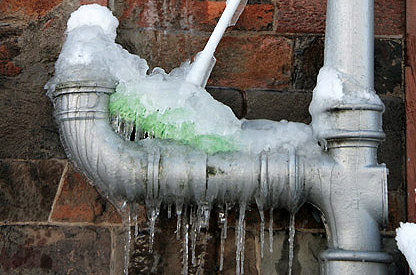Avoiding Frozen Plumbing in Cold Weather: Critical Strategies
Avoiding Frozen Plumbing in Cold Weather: Critical Strategies
Blog Article
What're your ideas concerning How to Prevent Your Pipes From Freezing?

Winter can ruin your plumbing, specifically by freezing pipes. Here's how to stop it from taking place and what to do if it does.
Introduction
As temperatures drop, the threat of frozen pipelines boosts, potentially causing pricey fixings and water damages. Recognizing just how to prevent icy pipes is crucial for house owners in cool climates.
Comprehending Icy Pipes
What triggers pipelines to ice up?
Pipelines freeze when exposed to temperature levels listed below 32 ° F (0 ° C) for extended durations. As water inside the pipelines freezes, it increases, putting pressure on the pipeline wall surfaces and potentially creating them to break.
Threats and damages
Icy pipelines can cause water supply disturbances, building damages, and costly repair work. Ruptured pipes can flooding homes and cause substantial structural damage.
Indicators of Frozen Pipeline
Recognizing frozen pipelines early can avoid them from breaking.
How to determine frozen pipes
Look for decreased water circulation from taps, uncommon smells or sounds from pipes, and noticeable frost on subjected pipes.
Prevention Tips
Protecting susceptible pipes
Cover pipelines in insulation sleeves or utilize heat tape to protect them from freezing temperature levels. Concentrate on pipes in unheated or exterior areas of the home.
Heating techniques
Keep indoor areas properly warmed, particularly locations with plumbing. Open cupboard doors to enable cozy air to flow around pipelines under sinks.
Safeguarding Outside Plumbing
Garden hose pipes and outside faucets
Disconnect and drain garden hoses prior to winter months. Install frost-proof spigots or cover exterior taps with protected caps.
What to Do If Your Pipes Freeze
Immediate actions to take
If you think frozen pipelines, keep faucets available to ease stress as the ice melts. Utilize a hairdryer or towels taken in warm water to thaw pipes slowly.
Long-Term Solutions
Structural modifications
Take into consideration rerouting pipelines away from exterior walls or unheated areas. Add extra insulation to attics, basements, and crawl spaces.
Upgrading insulation
Invest in premium insulation for pipes, attics, and walls. Appropriate insulation aids keep constant temperatures and decreases the risk of frozen pipelines.
Verdict
Protecting against icy pipes requires proactive steps and quick feedbacks. By recognizing the causes, signs, and safety nets, home owners can safeguard their plumbing throughout cold weather.
5 Ways to Prevent Frozen Pipes
Drain Outdoor Faucets and Disconnect Hoses
First, close the shut-off valve that controls the flow of water in the pipe to your outdoor faucet. Then, head outside to disconnect and drain your hose and open the outdoor faucet to allow the water to completely drain out of the line. Turn off the faucet when done. Finally, head back to the shut-off valve and drain the remaining water inside the pipe into a bucket or container. Additionally, if you have a home irrigation system, you should consider hiring an expert to clear the system of water each year.
Insulate Pipes
One of the best and most cost-effective methods for preventing frozen water pipes is to wrap your pipes with insulation. This is especially important for areas in your home that aren’t exposed to heat, such as an attic. We suggest using foam sleeves, which can typically be found at your local hardware store.
Keep Heat Running at 65
Your pipes are located inside your walls, and the temperature there is much colder than the rest of the house. To prevent your pipes from freezing, The Insurance Information Institute suggests that you keep your home heated to at least 65 degrees, even when traveling. You may want to invest in smart devices that can keep an eye on the temperature in your home while you’re away.
Leave Water Dripping
Moving water — even a small trickle — can prevent ice from forming inside your pipes. When freezing temps are imminent, start a drip of water from all faucets that serve exposed pipes. Leaving a few faucets running will also help relieve pressure inside the pipes and help prevent a rupture if the water inside freezes.
Open Cupboard Doors
Warm your kitchen and bathroom pipes by opening cupboards and vanities. You should also leave your interior doors ajar to help warm air circulate evenly throughout your home.

I discovered that entry about How to prepare your home plumbing for winter weather while doing a search on the search engines. Sharing is good. You never know, you could be helping someone out. Thanks a lot for your time invested reading it.
Go Company Report this page